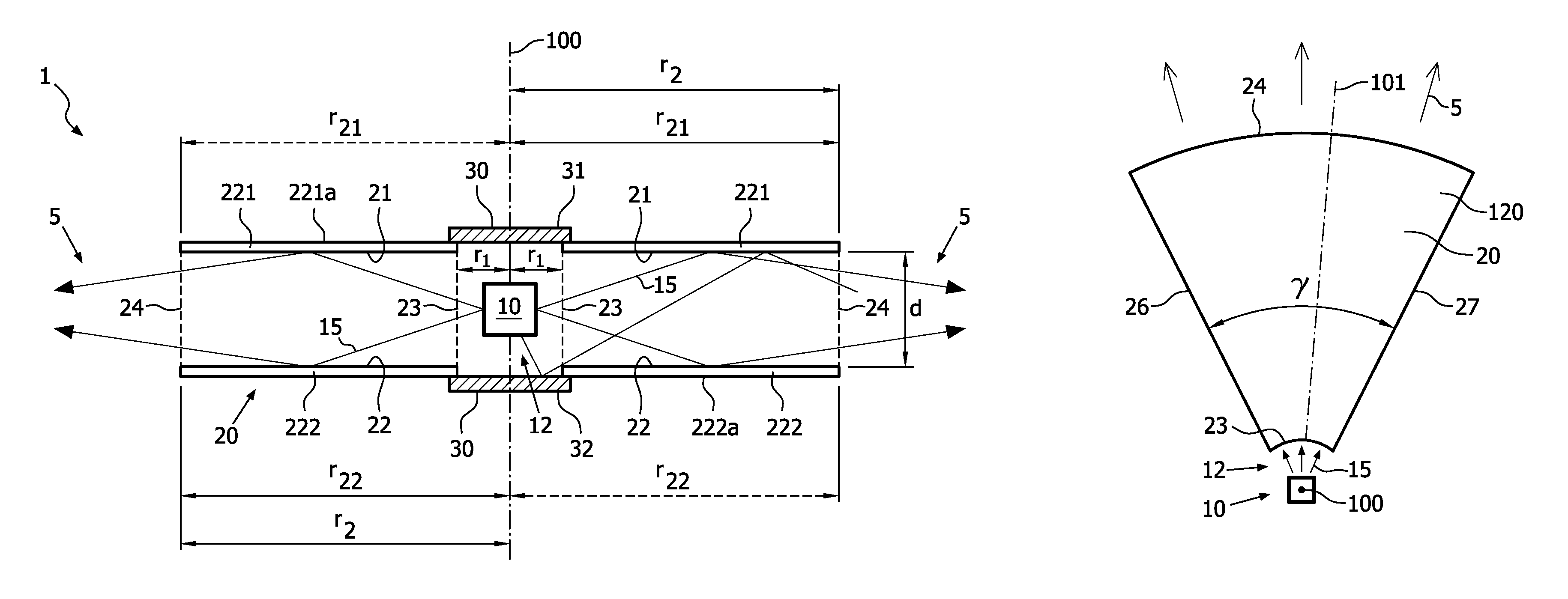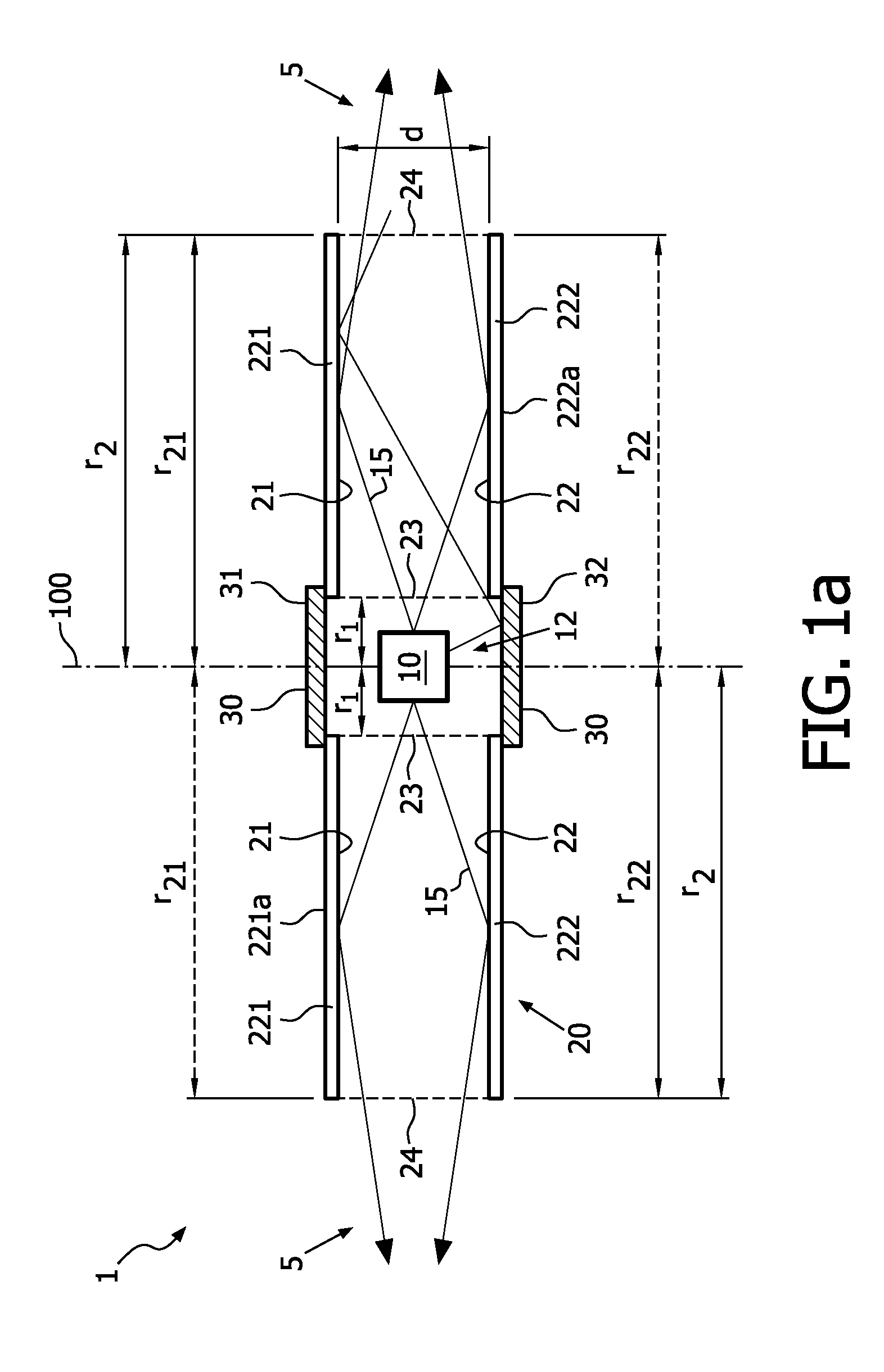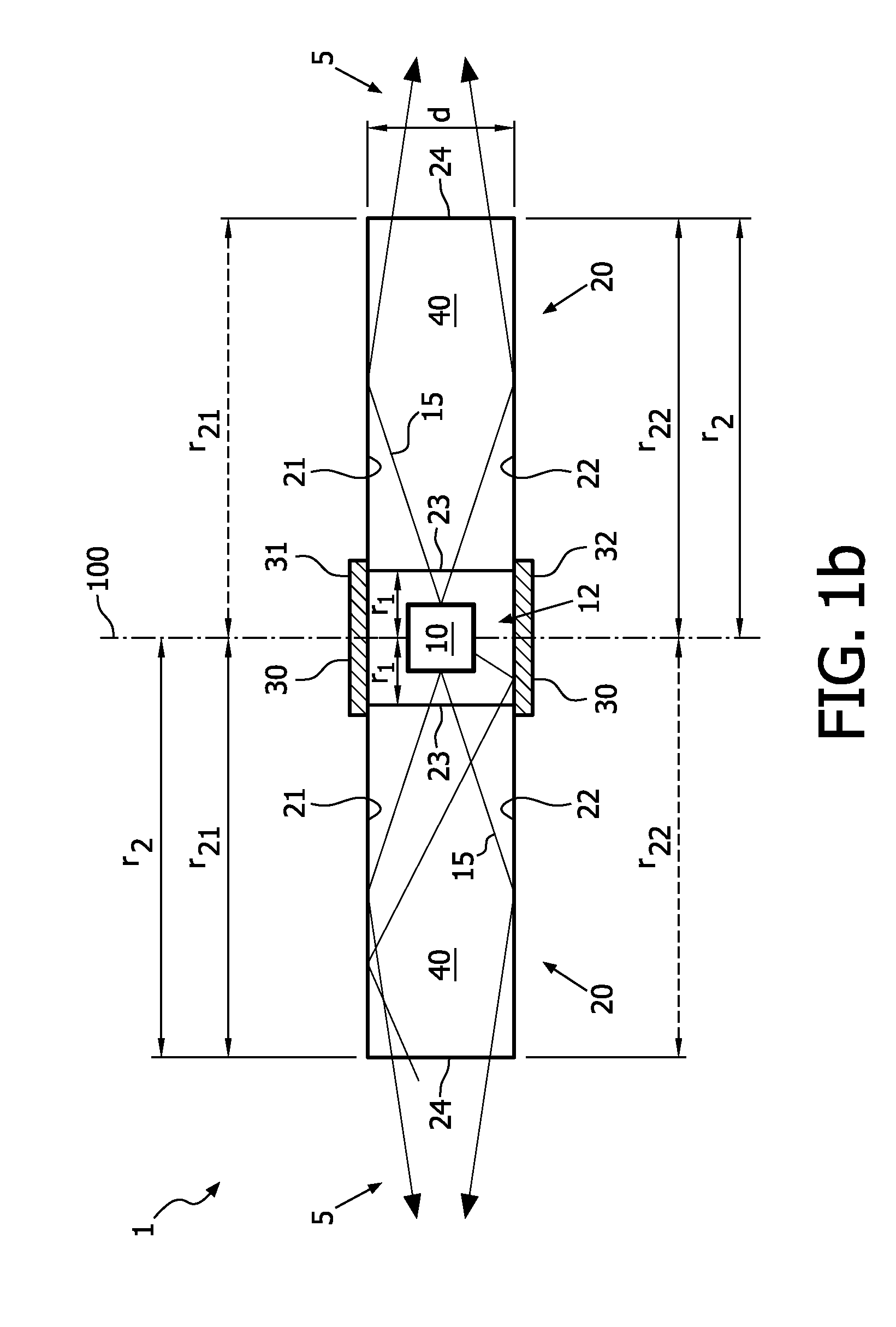Round illumination device
a technology of illumination device and round head, which is applied in the direction of lighting and heating apparatus, optical elements, instruments, etc., can solve the problems of deteriorating the slim appearance of the system, affecting the efficiency of the illumination device, and affecting the illumination effect of the round head, so as to achieve the effect of improving the illumination along the azimuth direction relatively simply
- Summary
- Abstract
- Description
- Claims
- Application Information
AI Technical Summary
Benefits of technology
Problems solved by technology
Method used
Image
Examples
example
[0106]An illumination device 1 was made, comprising a light source 10 as schematically depicted in FIG. 4g, with 24 Rebel LEDs from LumiLEDs, of which 18 neutral white LEDs 80 lm@1 W LXML-PWN1-0080 and 6 amber LEDs 65 lm@2 W LXML-PL01-0030. The light source 10 emits in radial directions, see FIG. 4g.
[0107]A circular waveguide 20 is arranged around the light source 10, said waveguide having an inner radius r1 of 20 mm, and an outer radius r2 of about 75 mm (in fact radius r21 is 75 mm, since the edge window 24 is slanted). The slant angle of edge window 24 is 45° (radius r22 is thus slightly shorter than radius r21). There is a first cap 31 (here, a reflector) at one side, and a reflecting surface at the other side (not depicted), which is part of an aluminum mechanical substrate that supports the system, and acts as a heat sink. The circular waveguide 20 substantially consists of PMMA (and is thus made of a solid transparent material 40). The thickness d of the waveguide 20 is 5 mm...
PUM
 Login to View More
Login to View More Abstract
Description
Claims
Application Information
 Login to View More
Login to View More - R&D
- Intellectual Property
- Life Sciences
- Materials
- Tech Scout
- Unparalleled Data Quality
- Higher Quality Content
- 60% Fewer Hallucinations
Browse by: Latest US Patents, China's latest patents, Technical Efficacy Thesaurus, Application Domain, Technology Topic, Popular Technical Reports.
© 2025 PatSnap. All rights reserved.Legal|Privacy policy|Modern Slavery Act Transparency Statement|Sitemap|About US| Contact US: help@patsnap.com



